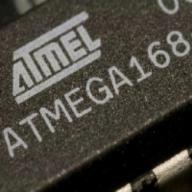請問 以下兩條分別 有無reaction?
a) CuSO4 + HNO3
b) CH3COOH + NaCl
同埋係點知道呢?
F.4 Chemistry (Salt)
2014-03-19 4:18 am
回答 (4)
2014-03-19 5:53 am
✔ 最佳答案
a) CuSO4(s) + HNO3(aq) -> Cu(NO3)2(aq) + H2SO4 (aq)CuSO4 can be dissolved in water. (refer to the solubility table)
because both products produced are in aqueous form (sulphuric acid and copper (II) nitrate), therefore no observable change.
b) CH3COOH(aq) +NaCl(s) -> CH3COONa(aq) + HCl(aq)
NaCl can be dissolved in water. (refer to the solubility table)
same explanation as in part a.
2014-03-19 12:03:59 補充:
umm... actually it is not no observable change (sorry for the mistakes typed above) coz you will be able to see the solid powder dissolved in both cases. There are reactions in both cases.
Hope u will understand!
2014-03-19 12:09:44 補充:
and no observable change not necessarily equal to no reaction.
No observable change means you cannot observe any changes, for example all the product in the equation are aqueous solution. For no reaction, you can refer back to the displacement reaction part for more information. ur chem book must
2014-03-19 12:10:06 補充:
have some examples that no reaction take places.
2014-03-20 8:09 pm
a) One of the chemical properties of conc sulphuric acid is: displacement of Nitrates from their metal salts because of H2SO4 is much less volatile than HNO3.
In this case, HNO3 cannot displace Sulphate ion from its salt.
b) acetic acid is not strong enough to completely ionize and displace Cl- from the salt.
H+ + Cl- ====> practically impossible to generate a strong acid from a weaker one.
No chemical reactions are expected in both (a) and (b) above.
2014-04-04 09:40:47 補充:
HNO3 cannot displace Sulphate ion from its salt.
2014-04-04 09:42:30 補充:
Why do you need to consult the electrochemical series? They are not related to any redox reactions.
In this case, HNO3 cannot displace Sulphate ion from its salt.
b) acetic acid is not strong enough to completely ionize and displace Cl- from the salt.
H+ + Cl- ====> practically impossible to generate a strong acid from a weaker one.
No chemical reactions are expected in both (a) and (b) above.
2014-04-04 09:40:47 補充:
HNO3 cannot displace Sulphate ion from its salt.
2014-04-04 09:42:30 補充:
Why do you need to consult the electrochemical series? They are not related to any redox reactions.
2014-03-20 7:57 am
HCl + NaOH --> NaCl + H2O
是有反應但用眼看不出來,因為原本是無色水溶液,到反應結束後還是無色水溶液。看不出變化。當然如果你用温度計去量的話是有温度上升的。
(一般的)可觀察變化指用眼可觀察到的變化例如變色,在這觀點之下 :
HCl + NaOH --> NaCl + H2O
是一個有反應而無可觀察變化的例子。
是有反應但用眼看不出來,因為原本是無色水溶液,到反應結束後還是無色水溶液。看不出變化。當然如果你用温度計去量的話是有温度上升的。
(一般的)可觀察變化指用眼可觀察到的變化例如變色,在這觀點之下 :
HCl + NaOH --> NaCl + H2O
是一個有反應而無可觀察變化的例子。
2014-03-19 6:01 am
Thank you !
但係我想問 no obsevable change 係咪唔等於無reaction?
2014-03-25 23:43:43 補充:
意思係我要睇返個electrochemical series,compare oxidizing power?
但係我想問 no obsevable change 係咪唔等於無reaction?
2014-03-25 23:43:43 補充:
意思係我要睇返個electrochemical series,compare oxidizing power?
收錄日期: 2021-04-16 16:30:00
原文連結 [永久失效]:
https://hk.answers.yahoo.com/question/index?qid=20140318000051KK00155

